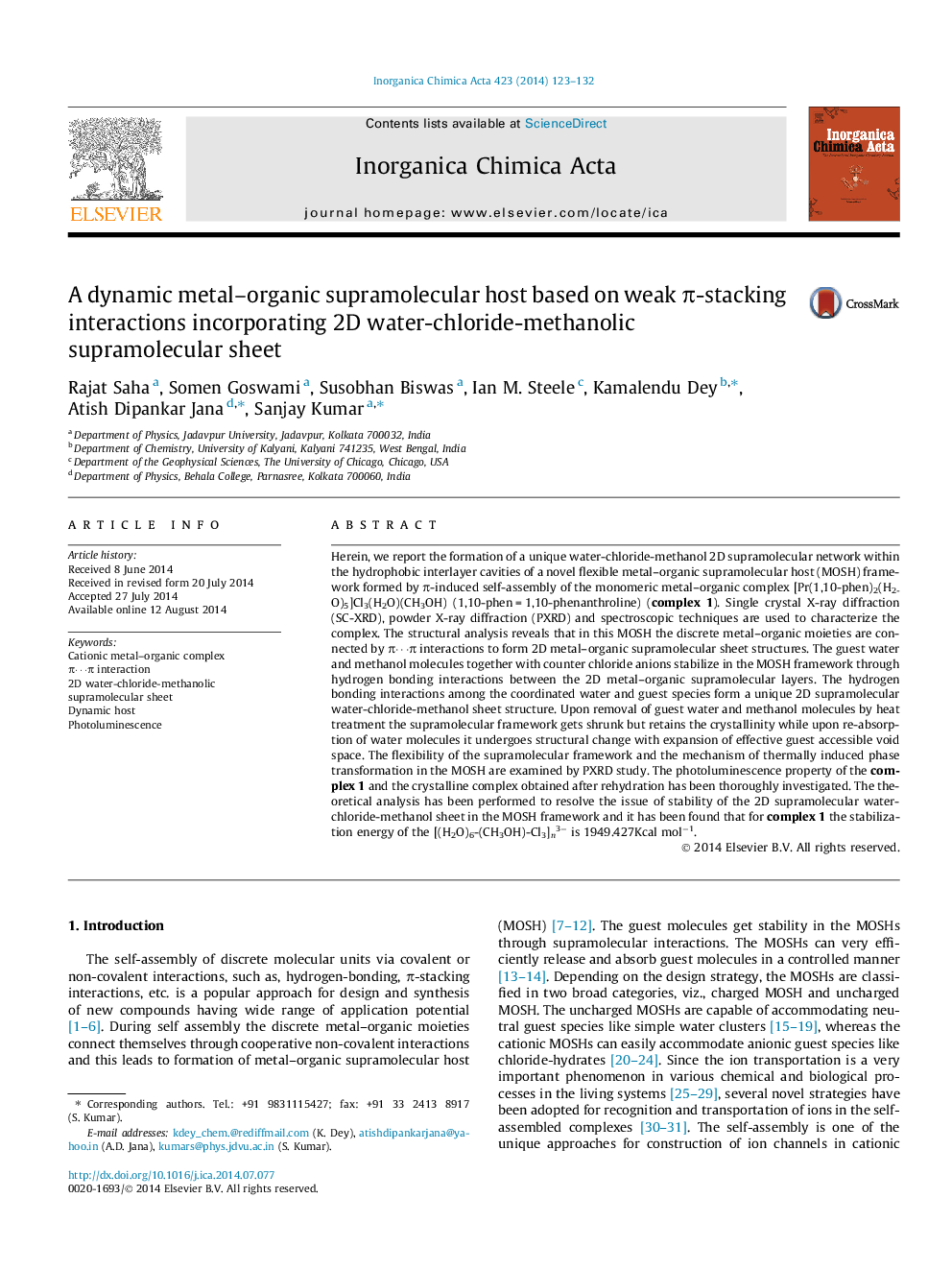| کد مقاله | کد نشریه | سال انتشار | مقاله انگلیسی | نسخه تمام متن |
|---|---|---|---|---|
| 1309448 | 975209 | 2014 | 10 صفحه PDF | دانلود رایگان |

• Metal–organic supramolecular host (MOSH).
• 2D water-chloride-methanolic supramolecular sheet.
• Flexible and dynamic MOSH.
• Guest dependent structural transformation.
• Photoluminescence and theoretical study.
Herein, we report the formation of a unique water-chloride-methanol 2D supramolecular network within the hydrophobic interlayer cavities of a novel flexible metal–organic supramolecular host (MOSH) framework formed by π-induced self-assembly of the monomeric metal–organic complex [Pr(1,10-phen)2(H2O)5]Cl3(H2O)(CH3OH) (1,10-phen = 1,10-phenanthroline) (complex 1). Single crystal X-ray diffraction (SC-XRD), powder X-ray diffraction (PXRD) and spectroscopic techniques are used to characterize the complex. The structural analysis reveals that in this MOSH the discrete metal–organic moieties are connected by π⋯π interactions to form 2D metal–organic supramolecular sheet structures. The guest water and methanol molecules together with counter chloride anions stabilize in the MOSH framework through hydrogen bonding interactions between the 2D metal–organic supramolecular layers. The hydrogen bonding interactions among the coordinated water and guest species form a unique 2D supramolecular water-chloride-methanol sheet structure. Upon removal of guest water and methanol molecules by heat treatment the supramolecular framework gets shrunk but retains the crystallinity while upon re-absorption of water molecules it undergoes structural change with expansion of effective guest accessible void space. The flexibility of the supramolecular framework and the mechanism of thermally induced phase transformation in the MOSH are examined by PXRD study. The photoluminescence property of the complex 1 and the crystalline complex obtained after rehydration has been thoroughly investigated. The theoretical analysis has been performed to resolve the issue of stability of the 2D supramolecular water-chloride-methanol sheet in the MOSH framework and it has been found that for complex 1 the stabilization energy of the [(H2O)6-(CH3OH)-Cl3]n3− is 1949.427Kcal mol−1.
The formation of a unique water-chloride-methanol 2D supramolecular network within the hydrophobic interlayer cavities of a novel flexible metal–organic supramolecular host (MOSH) framework formed by π-induced self-assembly of the monomeric metal–organic complex [Pr(1,10-phenanthroline)2(H2O)5]Cl3(H2O)(CH3OH) has been investigated through single crystal X-ray diffraction and theoretical calculation. Powder X-ray diffraction and thermal studies are employed to probe thermally induced phase transformation in the MOSH.Figure optionsDownload as PowerPoint slide
Journal: Inorganica Chimica Acta - Volume 423, Part A, 1 November 2014, Pages 123–132